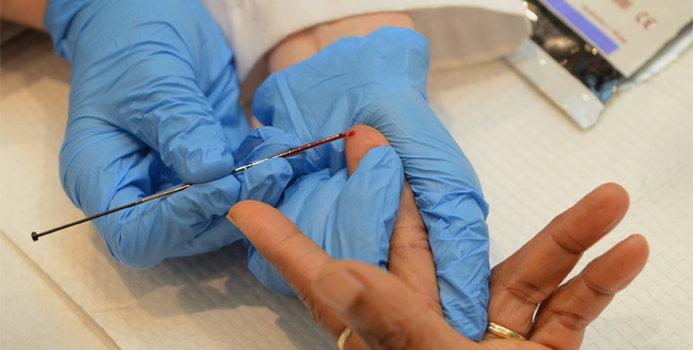Knowing your serum/blood cholesterol level is a must if you want to find out if you're at risk for heart disease and stroke. It also helps you determine whether or not you need to make lifestyle changes or take cholesterol-lowering medications. The American Heart Association suggests all adults ages 20 and older get their blood cholesterol tested about every four years. If you have high cholesterol, ask your doctor how often you should be checked.
Determining Serum Cholesterol
There's no magic formula for calculating your blood cholesterol level. The most accurate way to find out your cholesterol profile is to have your doctor to perform a blood test. This test determines values for your total cholesterol, high-density lipoprotein cholesterol -- which is your good HDL cholesterol -- low-density lipoprotein cholesterol, also known as bad LDL cholesterol, and triglycerides. While home cholesterol testing kits are widely available, the accuracy of these devices is controversial and the kits may not provide you with a complete cholesterol profile.
Total Cholesterol
Your total serum blood cholesterol level is a combination of your HDL, LDL and percentage of your triglyceride value. Calculate your total cholesterol by adding HDL to LDL and 20 percent of your triglyceride value, suggests the American Heart Association, or AHA. The AHA notes that an optimal total cholesterol score is less than 180 milligrams per deciliter.
HDL Cholesterol
Because your HDL cholesterol helps protect you from heart disease, the higher your HDL level is the better. MedlinePlus notes that HDL values should be at least 40 milligrams per deciliter, but levels at 60 mg/dL or higher will significantly reduce your heart-disease risks. If your HDL value is less than 40 mg/dL, try exercising most days of the week, stop smoking if you're a smoker, and achieve or maintain a healthy body weight to increase HDL cholesterol.
LDL Cholesterol
To keep your chronic disease risks low, aim to maintain an LDL cholesterol value below 100 mg/dL, suggests MedlinePlus. If your LDL is higher than it should be, exercise regularly, achieve or maintain a healthy body weight, and reduce the amount of saturated and trans fat you eat. Saturated fat is abundant in cheese, whole milk, ice cream, cream, butter, whole-milk yogurt and high-fat meats. Trans fats are often found in shortening, margarine, fried foods and commercial baked goods.
Triglyceride Levels
Healthy triglyceride values that help decrease your risk for stroke and heart attack are under 150 mg/dL, according to Cleveland Clinic. If your triglycerides are above 200 mg/dL, try regular exercise, weight loss if you're overweight, and a lower intake of dietary saturated fat, added sugar, alcoholic beverages and refined carbohydrates (such as white bread, regular pasta and white rice). Taking fish oil supplements often helps reduce high triglyceride levels by up to 30 percent, according to New York University's Langone Medical Center. However, when taking fish oil supplements to treat high triglyceride levels, talk with your doctor to determine which dosage you should take.
Why Saturated Fatty Acids Are Harmful
An experienced health, nutrition and fitness writer, Erin Coleman is a registered and licensed dietitian and holds a dietetics degree from the University of Wisconsin-Madison. She also has worked as a clinical dietitian and health educator in outpatient settings. Erin's work is published on popular health websites, such as TheNest.com and JillianMichaels.com.



